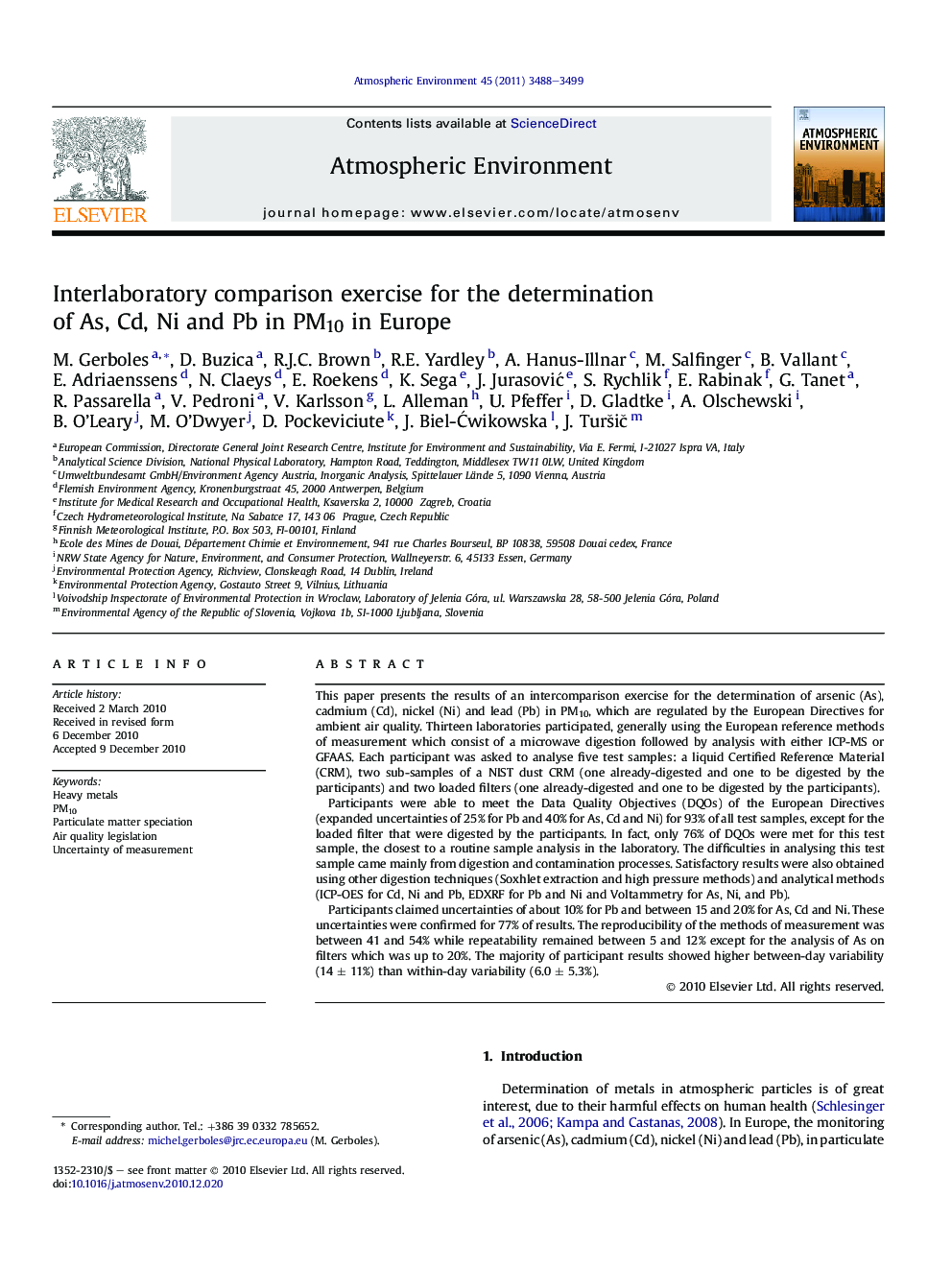| کد مقاله | کد نشریه | سال انتشار | مقاله انگلیسی | نسخه تمام متن |
|---|---|---|---|---|
| 4439580 | 1311025 | 2011 | 12 صفحه PDF | دانلود رایگان |

This paper presents the results of an intercomparison exercise for the determination of arsenic (As), cadmium (Cd), nickel (Ni) and lead (Pb) in PM10, which are regulated by the European Directives for ambient air quality. Thirteen laboratories participated, generally using the European reference methods of measurement which consist of a microwave digestion followed by analysis with either ICP-MS or GFAAS. Each participant was asked to analyse five test samples: a liquid Certified Reference Material (CRM), two sub-samples of a NIST dust CRM (one already-digested and one to be digested by the participants) and two loaded filters (one already-digested and one to be digested by the participants).Participants were able to meet the Data Quality Objectives (DQOs) of the European Directives (expanded uncertainties of 25% for Pb and 40% for As, Cd and Ni) for 93% of all test samples, except for the loaded filter that were digested by the participants. In fact, only 76% of DQOs were met for this test sample, the closest to a routine sample analysis in the laboratory. The difficulties in analysing this test sample came mainly from digestion and contamination processes. Satisfactory results were also obtained using other digestion techniques (Soxhlet extraction and high pressure methods) and analytical methods (ICP-OES for Cd, Ni and Pb, EDXRF for Pb and Ni and Voltammetry for As, Ni, and Pb).Participants claimed uncertainties of about 10% for Pb and between 15 and 20% for As, Cd and Ni. These uncertainties were confirmed for 77% of results. The reproducibility of the methods of measurement was between 41 and 54% while repeatability remained between 5 and 12% except for the analysis of As on filters which was up to 20%. The majority of participant results showed higher between-day variability (14 ± 11%) than within-day variability (6.0 ± 5.3%).
► Participants mainly analysed heavy metalbyICPMS/GFAAS after micro-wave digestion.
► 76% of participants had uncertainty <25% for Pb and 40% for As, Cd and Ni in PM10.
► Sample digestion and contamination processes were the major difficulties.
► Suitable digestion with Soxhlet and high pressure and partly analysis by ICP-OES, EDXRF and Voltammetry.
► Reproducibility: 41–54%, repeatability: 5–12% except for As (20%).
Journal: Atmospheric Environment - Volume 45, Issue 20, June 2011, Pages 3488–3499